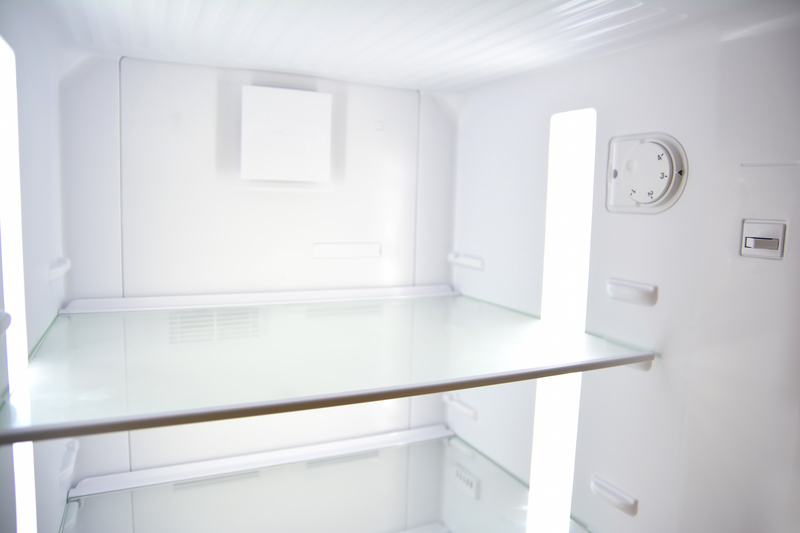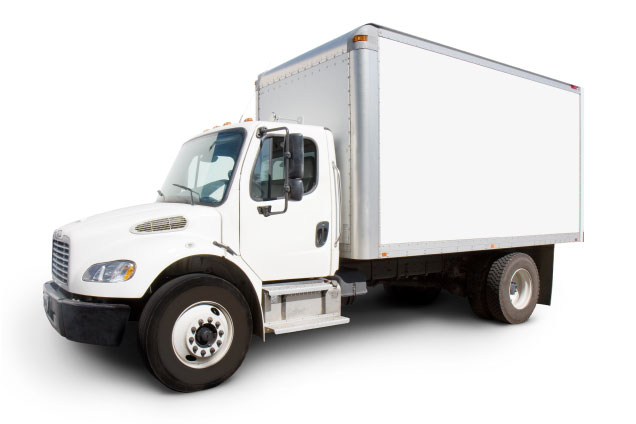Unlock the Secrets to Moving Your Bed and Mattress
Posted on 03/06/2025
Unlock the Secrets to Moving Your Bed and Mattress
Relocating can be a daunting process, especially when it comes to moving large furniture like beds and mattresses. Whether you're shifting across the street or to another city, moving your bed and mattress requires careful planning, the right materials, and a few insider tips. In this comprehensive guide, we'll unlock the secrets to ensuring a smooth, damage-free move for your most essential sleeping equipment.

Why Properly Moving Your Bed and Mattress Matters
Your bed and mattress aren't just pieces of furniture--they're central to your daily comfort and health. Mattresses can be expensive and delicate, easily bent out of shape without proper handling. Bed frames are bulky and often come with intricate assembly parts. Lacking a strategic approach can lead to damage, lost parts, and a poor night's sleep upon arrival.
- Prevents Physical Damage: Avoids tears, dents, or scratches on fabric and frames
- Makes Assembly Easier: Organized disassembly and labeling ease reassembly
- Keeps Mattress Hygienic: Protects against dirt, moisture, and contaminants
- Preserves Warranty: Correct handling helps you maintain your manufacturer's warranty
Essential Preparation Before Moving Your Bed and Mattress
Before you even touch a screwdriver, investing a little time in preparation can pay big dividends. Let's break down the preparatory steps for an efficient move:
Measure Your Bed, Mattress, and Pathways
Measure your mattress, headboard, footboard, and any significant elements of your bed. Record the dimensions and compare them with doorways, stairwells, and hallways. This avoids getting stuck with a mattress wedged halfway up the staircase.
- Edit Furniture Layouts: Plan the new room layout in advance--sketch a quick diagram if necessary.
- Check Clearance: Don't forget to consider elevator size and turns in hallways.
Gather the Right Tools and Supplies
Arming yourself with the correct tools and packing supplies is essential. Here are the must-haves for moving your bed and mattress safely:
- Mattress Bags or Covers: Protect your mattress from dust, dirt, and moisture. These are available for all sizes.
- Plastic Wrap or Moving Blankets: Use these to shield the bed frame, slats, and headboards from scratches.
- Tool Kit: Most beds require screwdrivers, Allen wrenches, or a socket set for disassembly.
- Labels and Zip Bags: Store nuts, bolts, and screws in labeled bags to prevent loss.
- Straps or Ropes: For securing parts during the move, especially in moving trucks.
- Hand Truck or Dolly: Vital for managing heavy or awkward items, especially with stairs or long distances.
*Additional tip*: Check your mattress for signs of wear or infestation before moving. If it's heavily soiled or compromised, now may be the perfect time to invest in a new one.
The Step-By-Step Process: How To Move Your Bed and Mattress
1. Clear the Surrounding Area
Start by removing all bedding, pillows, and accessories. Launder your bedding while you move, so it's fresh when you're ready to set up your new sleeping nest. Clearing the area makes the next steps simpler and safer.
2. Disassemble the Bed Frame
Most modern bed frames are built for assembly and disassembly. Here's the smart sequence for deconstructing your bed without hassle:
- Photograph or Note Each Step: Take pictures on your phone of the assembly at each stage. This will serve as a reference during reassembly.
- Work in Pairs: Some bed frames are heavy or have awkward sections. A helper makes it safer and more efficient.
- Keep Hardware Organized: Place all screws and parts in a labeled zip bag and tape it to the main frame, so nothing goes missing.
- Wrap Fragile Components: Use moving blankets or bubble wrap for headboards, slats, and footboards.
3. How to Move Your Mattress
Mattresses are bulky, floppy, and prone to damage during transit if unprotected. To safely move your mattress:
- Slide the Mattress into a Mattress Bag: This shields it from dust, dirt, and rain.
- Move Carefully Through Tight Spaces: Stand the mattress on its side when carrying, as this is easier for navigating hallways and doors.
- Never Bend or Fold Your Mattress: Especially for innerspring or hybrid mattresses--bending can damage the springs or foam layers. Only flexible foam mattresses should ever be temporarily bent.
If you must transport your mattress on the roof of a car, secure it tightly using ratchet straps; remember that wind can harm the mattress or send it airborne. Ideally, fit the mattress inside a vehicle to avoid exposure to the elements.
4. Transporting the Bed Frame and Mattress
When loading into a moving truck:
- Lay the Mattress Flat (if there's space): This prevents structural stress, especially on memory foam mattresses.
- Secure the Mattress Upright (if space is tight): Use straps to fasten it against the truck wall. Avoid placing items on top of the mattress.
- Place Bed Parts Together: Lay slats and rails close together with padding between them. Ensure hardware is secure and easy to find.
5. Unloading and Reassembly
At your new home, carry the mattress directly into the correct room before unpacking. Reassemble the bed frame using your reference photos and labeled hardware. After completion, let the mattress rest and air out, especially if it was packed for a prolonged period.
Insider Strategies for Easier Bed and Mattress Moves
Hire Professional Movers (When Appropriate)
Heavy, king-sized beds, adjustable bases, and specialty mattresses sometimes require professional help due to difficult staircases, limited elevator space, or sheer weight. A reliable mover can bring tools, protective gear, and experience to prevent injury and maximize efficiency.
- Inquire About Mattress Handling: Not all movers are experts at moving mattresses--ask specifically about their experience and procedures.
- Get Insurance: For long-distance or high-value items, consider moving insurance for peace of mind.
Moving Different Types of Mattresses
The type of mattress you own will affect your packing and transportation strategy. Let's explore common varieties:
- Memory Foam/Hybrid Mattresses: These are heavy and floppy, often best carried by two people. Never fold unless the manufacturer states it's safe.
- Innerspring Mattresses: More rigid but prone to bending damage. Always transport flat or upright, never folded.
- Latex Mattresses: Heavy and flexible but can tear--use sturdy covers and two-person carry.
- Adjustable Bases: Disassemble per the manufacturer's manual. Remove motors and electronics, protecting them in padded boxes.
Creative Solutions for Challenging Moves
If you can't fit your bed or mattress up a staircase or through tight doorways, consider these clever workarounds:
- Alternate Paths: Try balconies, large windows, or service elevators, but use professional help to avoid injury.
- Temporary Removal: Take off doors or railings for extra inches of clearance.
- Break Down Further: Some bed frames have concealed fasteners for further disassembly--consult the manual or search online for your model.
- Storage Solutions: If immediate setup isn't possible, store your mattress flat in a climate-controlled environment to avoid mold or warping.
Frequently Asked Questions About Moving Beds and Mattresses
Can I roll or fold my mattress to move it?
*Generally no.* Only certain foam mattresses can be compressed or rolled. Traditional innerspring or hybrid mattresses risk permanent damage if folded or bent. Always consult your mattress manufacturer or check their website for specific instructions on moving.
What's the best way to protect my mattress during a move?
Investing in a heavy-duty mattress bag is the simplest and most effective solution. For added protection, double wrap the bag with plastic sheeting or moving blankets, paying special attention to the corners and edges prone to rips.
Should I clean my mattress before moving?
Absolutely. Vacuum both sides of the mattress and spot-clean any stains. This ensures you're not bringing allergens, dust, or bacteria to your new bedroom.
How do I avoid losing screws and hardware?
Place all small parts in a labeled zip bag and tape it to one of the larger bed frame components--or better yet, store it in your personal bag for easy access at the new location.
Can I transport a mattress on the roof of my car?
While technically possible for short distances, it isn't recommended for safety reasons. Mattresses may become airborne or get damaged by wind and weather. If you must, use multiple ratchet straps and drive slowly, but try to fit your mattress inside a van or truck whenever possible.

Eco-Friendly and Cost-Saving Tips for Moving Beds and Mattresses
- Reuse Packing Materials: Use household blankets and sheets to cushion bed parts.
- Sell or Donate Old Mattresses: Many charities and recycling centers accept donations (check regulations in your area).
- Rent Tools: Save costs by renting dollies or moving straps from a hardware or moving supply store.
- Disassemble Ahead of Time: This makes moving day smoother, saving you time and stress.
Remember, proper care during the moving process extends the life of your furniture and preserves comfort in your new home.
Conclusion: Move Your Bed and Mattress Like a Pro
Relocating your sleeping setup doesn't have to be stressful. By following these professional tips for moving your bed and mattress, you can avoid common pitfalls and protect your investment for years to come. With a little preparation, the right supplies, and a touch of patience, you can be sure that your bed and mattress make the journey just as smoothly as you do.
- Measure everything--twice.
- Use protective covers and keep hardware organized.
- Ask for help when handling heavy or delicate items.
- Consult professionals for extra-large or complex moves.
Ready to enjoy your new space--and a perfect night's sleep? Unlock the secrets to moving your bed and mattress with confidence using the guidance above, and rest easy knowing you've handled your most important furniture the right way.





